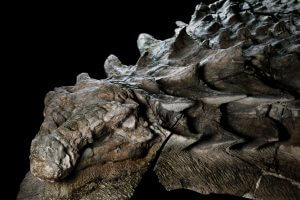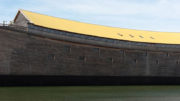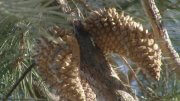The armored dinosaur fossil preserved in exquisite detail unearthed in a western Canadian oil sand mine highlights the new daunting challenges facing the theory of evolution. This stunningly preserved fossil is shattering long-standing paradigms.
“The more I look at it,” said Michael Greshko science writer for National Geographic, “the more mind-boggling it becomes.”
Caleb Brown, a paleobiologist at the Royal Tyrrell Museum where the fossil was placed on exhibit in August, explained to Greshko, “We don’t just have a skeleton… We have a dinosaur as it would have been.” The museum is host to one of the largest dinosaur collections in the world.
Now the fossil, known as Borealopelta markmitchelli (pictured), has the evolution industry struggling to place a new species in the mythical world of biological evolution, not what they once said it should be.
Red Deer Valley
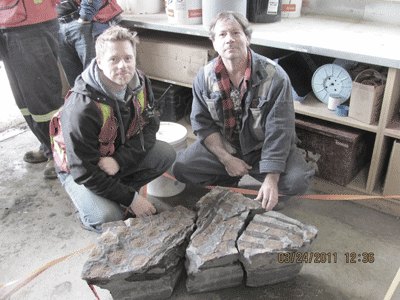 Oil sand heavy-equipment operator, Shawn Funk (pictured-left), early in the afternoon of March 2011, was shoveling his way through the oil sands of Millennium Mine in Alberta, Canada, operated by Suncor. Recognized now as one of the largest petroleum reserves in the world, the area emerged as a massive final resting place for the remnants of ancient marine plants and creatures overwhelmed during the Earth’s global flood.
Oil sand heavy-equipment operator, Shawn Funk (pictured-left), early in the afternoon of March 2011, was shoveling his way through the oil sands of Millennium Mine in Alberta, Canada, operated by Suncor. Recognized now as one of the largest petroleum reserves in the world, the area emerged as a massive final resting place for the remnants of ancient marine plants and creatures overwhelmed during the Earth’s global flood.
After spotting a glimpse of an unexpected lump in his shovel-load of material, Funk immediately shut down his enormous workhorse. Together with his supervisor, Michel Gratton, they immediately sent photos of their finding to the Royal Tyrrell Museum in Drumheller, Alberta. The excitement captivated Suncor.
Drumheller lies in the Red Deer River valley on the northeast of Calgary where, according to Donald Henderson, curator at the museum, “We’ve never found a dinosaur in this location.” But, that was going to change.
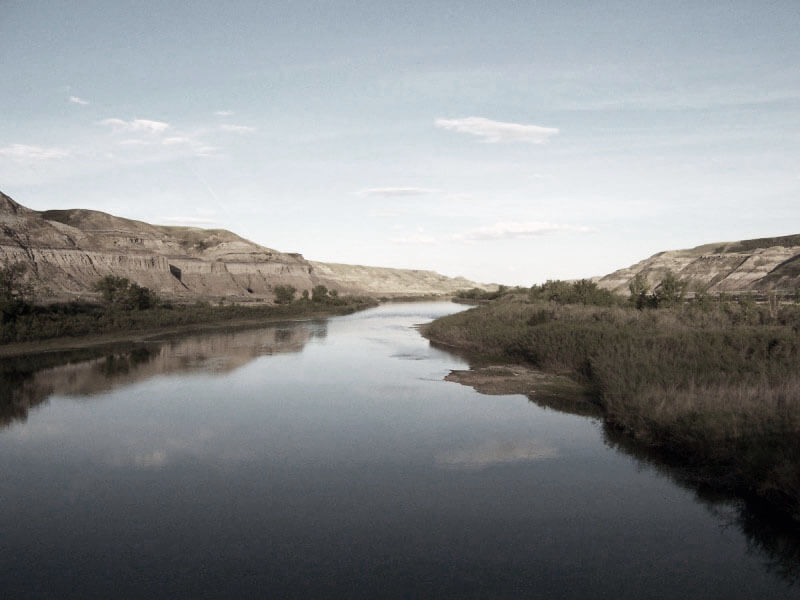 Fascinated with the photos, the museum sent a team to investigate. Two days later, expecting to find fossilized bones of a marine reptile, the museum team quickly realized something extraordinarily unexpected had been uncovered: a non-marine monster – a dinosaur, of some sort.
Fascinated with the photos, the museum sent a team to investigate. Two days later, expecting to find fossilized bones of a marine reptile, the museum team quickly realized something extraordinarily unexpected had been uncovered: a non-marine monster – a dinosaur, of some sort.
“All the mine staff from every level and department,” Henderson reported in The Guardian, “were tripping over themselves offering help.” After receiving three days of intensive training, the newly formed Suncor extraction team began the tedious fossil rock liberating process.
After a nearly disastrous two-weeks of dust and diesel exhaust, the team successfully extracted a 15,000-pound 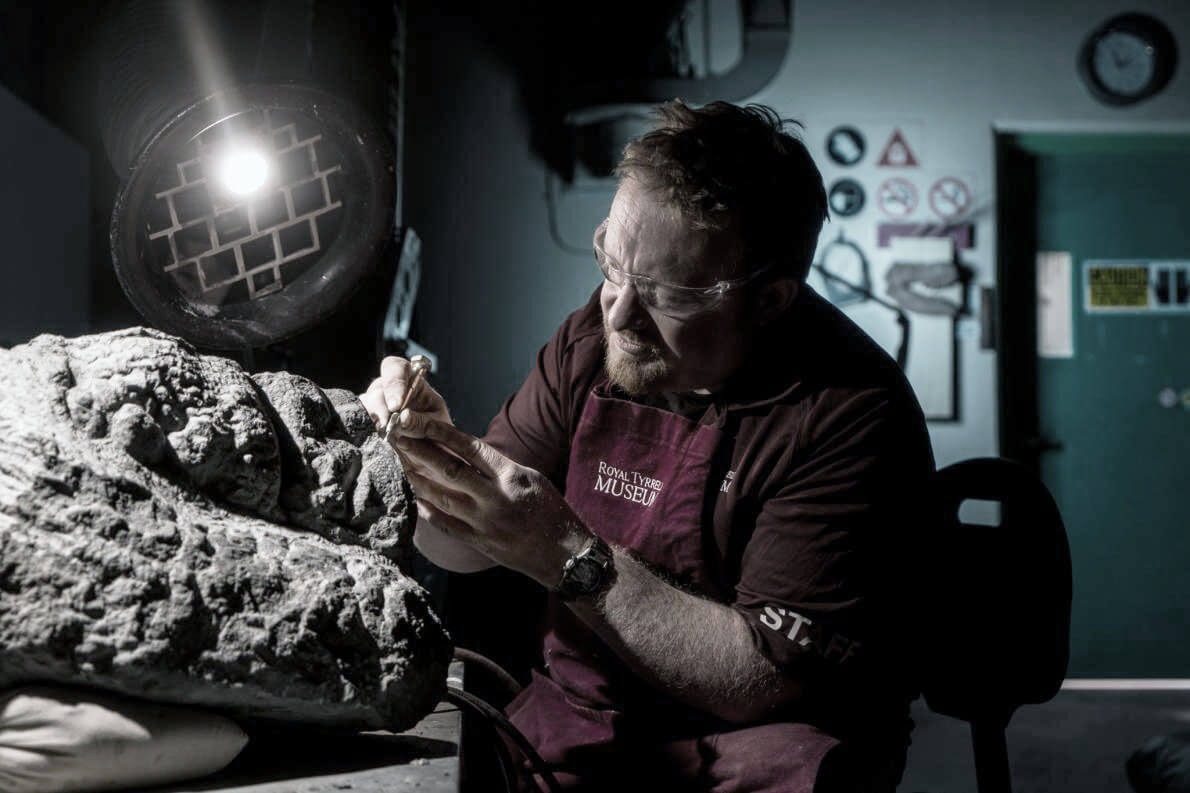 rock containing the mega-fossil. Working in 12-hour shifts, the endeavor was caught on camera. Plaster-wrapped and hoisted onto a truck bed, the treasure-laden rock was finally sent on its 420-mile museum-bound journey to Alberta.
rock containing the mega-fossil. Working in 12-hour shifts, the endeavor was caught on camera. Plaster-wrapped and hoisted onto a truck bed, the treasure-laden rock was finally sent on its 420-mile museum-bound journey to Alberta.
Paleontologist Mark Mitchell (pictured-left) at the museum, was entrusted with the project of stripping away the hard-set sediments at the museum from the fossil. Extricating the skull alone took nearly eight months. In total, after more than 7,000 hours of chipping-away over nearly six years, the an 18-foot-long dinosaur fossil weighing nearly 3,000 pounds was finally ready to be open to the public.
CONTINUE TO FULL ARTICLE AND MUCH MORE

